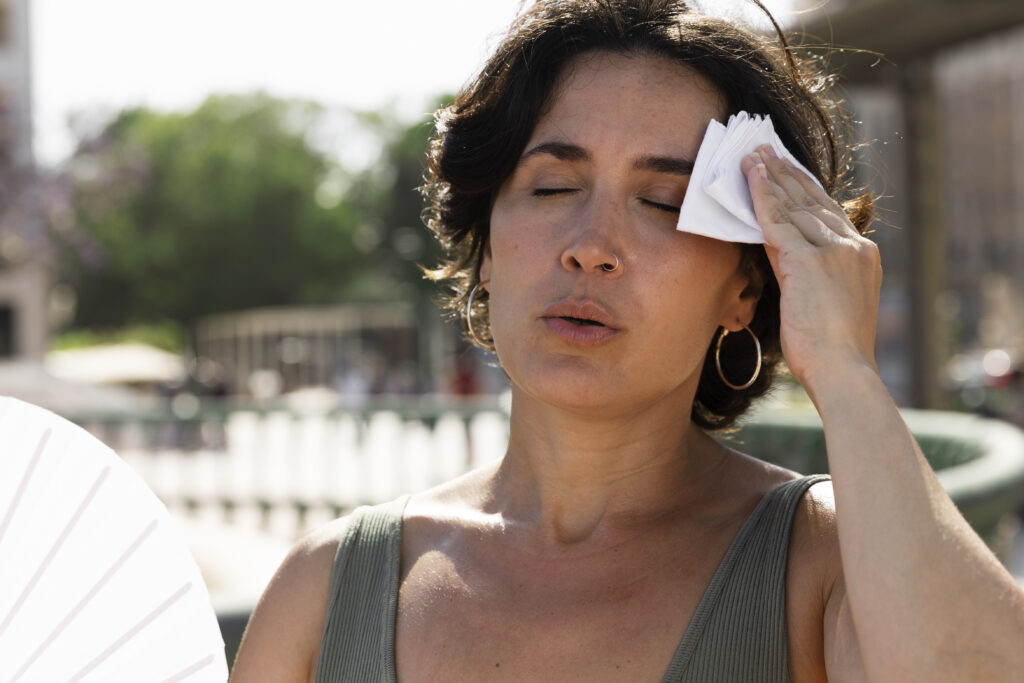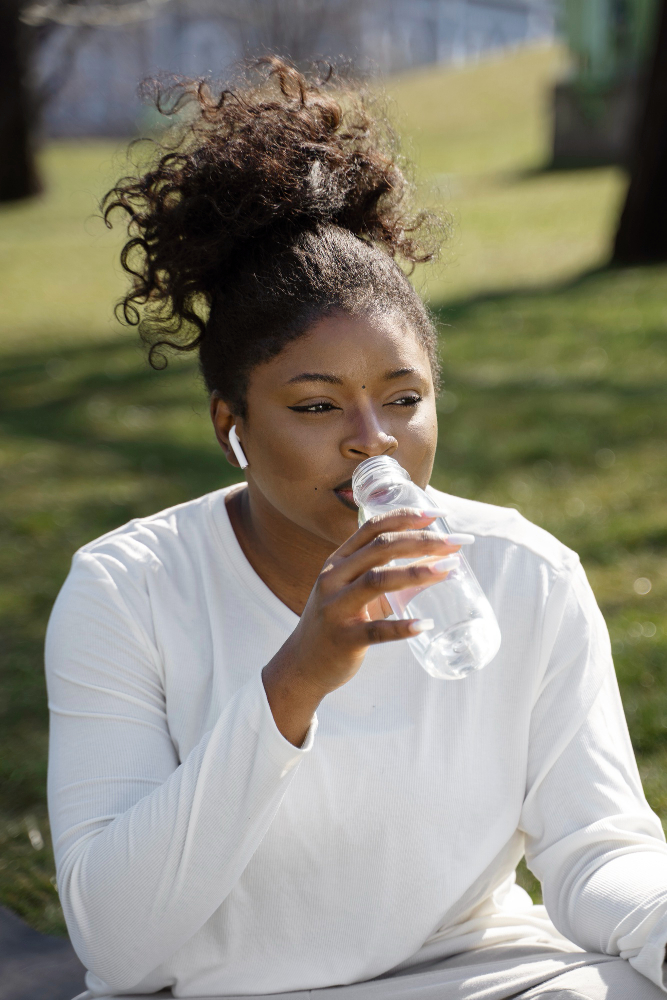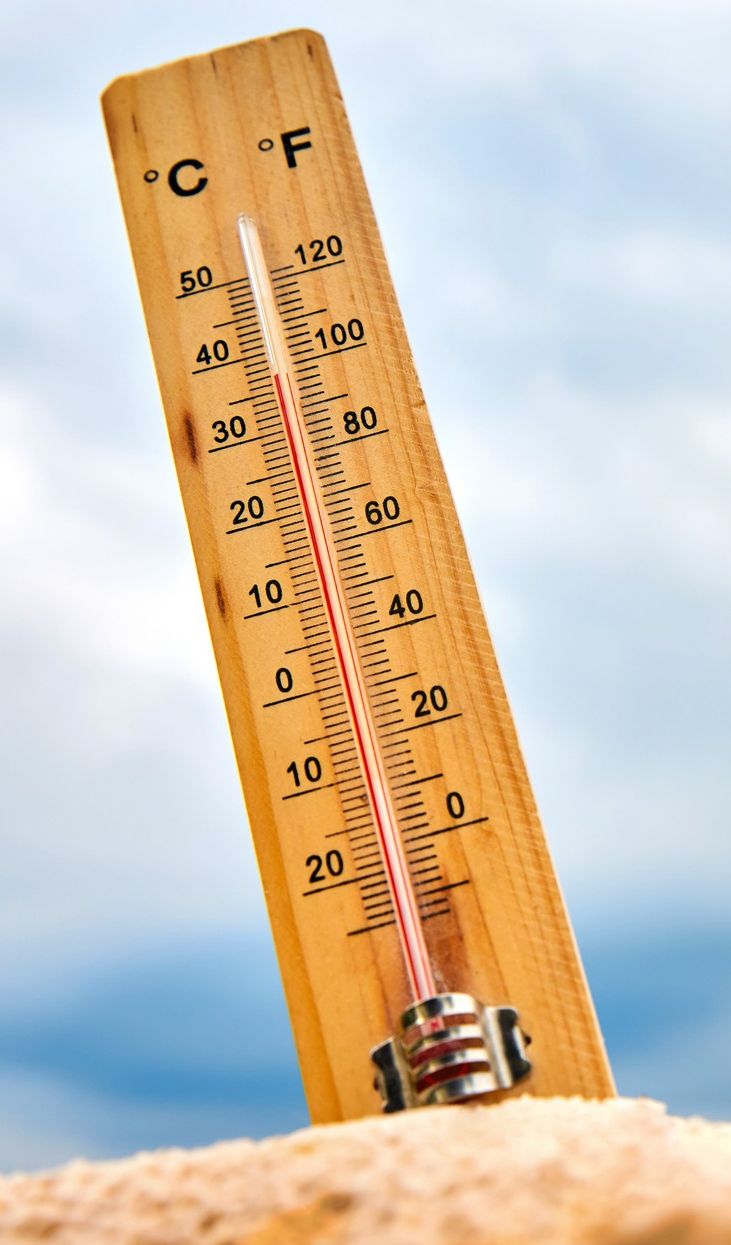
Get CPR training for your team!
If you have any questions feel free to email us at info@emccprtraining.com
CONTACT ONE OF OUR EXPERTS HERE

Last Updated on December 23, 2024 by CPR Training
Heat stroke is a silent yet deadly adversary.
In fact, regarding health emergencies in the workplace, their #1 concern often is…
Heat stroke.
Many employers have NO idea how to prevent or treat it. This knowledge gap can be what separates a safe and healthy work environment from one that’s potentially dangerous. But if you don’t know how to combat heat stroke effectively, your workforce may never reach its full potential regarding productivity and morale.
The first step in dealing with heat-related illnesses is recognizing the symptoms of a potential heat stroke.
This condition occurs when your body’s temperature rises rapidly, often due to extreme exposure to higher temperatures or strenuous activity without adequate hydration.
A high body temperature that can be fatal if not promptly treated characterizes heat stroke.
Other signs include hot skin, confusion, altered mental status, slurred speech, and seizures, which indicate this severe heat injury.
Beyond just understanding what constitutes a core body temperature indicating possible danger,
The human body is a remarkable machine, but it can only withstand a certain amount before succumbing to the pressures of extreme heat.
You should consider several measures to prevent heat-related illnesses, such as heat stroke and heat exhaustion.
Maintaining proper hydration levels prevents your core body temperature from rising rapidly.
This doesn’t just mean drinking when you’re thirsty; dehydration may have already occurred. Instead, consume plenty of fluids throughout the day, especially during strenuous activity or higher temperatures.

If possible, avoid engaging in rigorous physical activities during peak sun hours (usually between 10 am – 4 pm). This helps reduce exposure to extreme heat, potentially leading to a dangerous increase in body temperature, which might result in heat injury.
Your environment plays an essential role, too. Use air conditioning where available, or seek out cool areas for breaks if working outdoors. If neither option is feasible, consider using cold, wet cloths on the skin for effective cooling.
Lightweight, loose-fitting clothing allows sweat, your natural cooling mechanism, to evaporate more quickly than tight clothes.
Time is of the utmost importance when managing heat stroke.
The goal is to lower the body’s temperature as rapidly and safely as possible.
Effective cooling methods are crucial in this process.
If you’re near a cool area with air conditioning, move there immediately; if not, find shade or another cooler environment quickly.
This may seem obvious, yet it is still worth mentioning: If someone has suffered from a severe form of heat-related illness, like a heat stroke, they need rest. It’s crucial for them to not only physically recover by lowering their internal temperatures back within the normal range but also mentally recuperate, too, since these experiences often leave individuals feeling emotionally drained alongside all other physical symptoms experienced during an episode.
We’ll now delve into how we differentiate between two common illnesses related to higher temperatures: Heat Exhaustion and actual Heat Strokes. Understanding this distinction will enable us to handle situations head-on in hot environments… Stay tuned for our next discussion.
The contrast between heat exhaustion and heat stroke can be delicate, yet it is critical to comprehend.
Heat exhaustion, a precursor to the more severe heat stroke, is characterized by heavy sweating, rapid pulse, dizziness, fatigue, and cool, moist skin with goosebumps in hot weather conditions.
If left untreated, this could escalate into heat stroke, where the body’s temperature rises rapidly, which could prove fatal if not addressed promptly.
In contrast to heat exhaustion, heat injury, like heat stroke, occurs when core body temperature reaches higher temperatures (104°F or 40°C).

When a heat stroke strikes, the body’s temperature rises quickly and can cause serious complications or even death if not treated promptly.
Severe consequences and even death can result from this intense heat if not treated quickly.
An automated external defibrillator (AED) is essential in these situations.
A high body temperature can cause heart rhythm disturbances that require defibrillation with an AED device.
In case of unconsciousness or irregular heartbeat, seek immediate professional help while you initiate CPR using an AED machine. Be a link in the out-of-hospital chain of survival.
The importance of training in managing heat-related illnesses cannot be overstated.
In the face of extreme heat, knowledge is power. It can make a significant difference in preventing or treating conditions like heat stroke, heat exhaustion, and other forms of heat injury.

A critical aspect involves understanding how to respond if someone’s body temperature rises rapidly due to exposure to a hot environment and symptoms are detected.
This includes knowing that high body temperature fatal outcomes can be avoided by effective cooling techniques such as immersing the person in cool water or an ice bath, applying the skin, placing cold, wet clothes on their bodies, and moving them into air conditioning or at least a cooler area.
Heat stroke is a severe form of hyperthermia that can be life-threatening. It occurs when the body’s temperature rises above 104°F, often due to prolonged exposure to high temperatures or physical exertion in hot conditions.
Heat stroke can cause symptoms like confusion, rapid breathing, and racing heart rate. If not treated promptly, it may lead to complications such as organ damage, brain injury, or even death.
The four stages include dehydration (thirst), water depletion (weakness and unquenchable thirst), salt depletion (nausea and muscle cramps), and finally, full-blown heat exhaustion with possible fainting.
The survival rate for heat stroke varies depending on its severity and how quickly treatment is received. With prompt medical attention, most people recover fully from mild-to-moderate cases.
You’ve learned how to recognize its symptoms and take prompt action.
Prevention methods are no longer a mystery – staying hydrated and taking breaks can make all the difference.
You know how to treat heat stroke effectively, from cooling techniques to seeking medical help when necessary.
What are the differences between heat exhaustion and heat stroke? You’ve got that covered, too!
An AED in an emergency could be your best friend. Now you understand why!
And let’s not forget about First Aid training – it’s crucial for any workplace environment.
Contact us at www.emccprtraining.com/contact or 800-695-5655 to learn about our onsite CPR/AED training and AED sales.
Get CPR training for your team!
If you have any questions feel free to email us at info@emccprtraining.com
CONTACT ONE OF OUR EXPERTS HERE